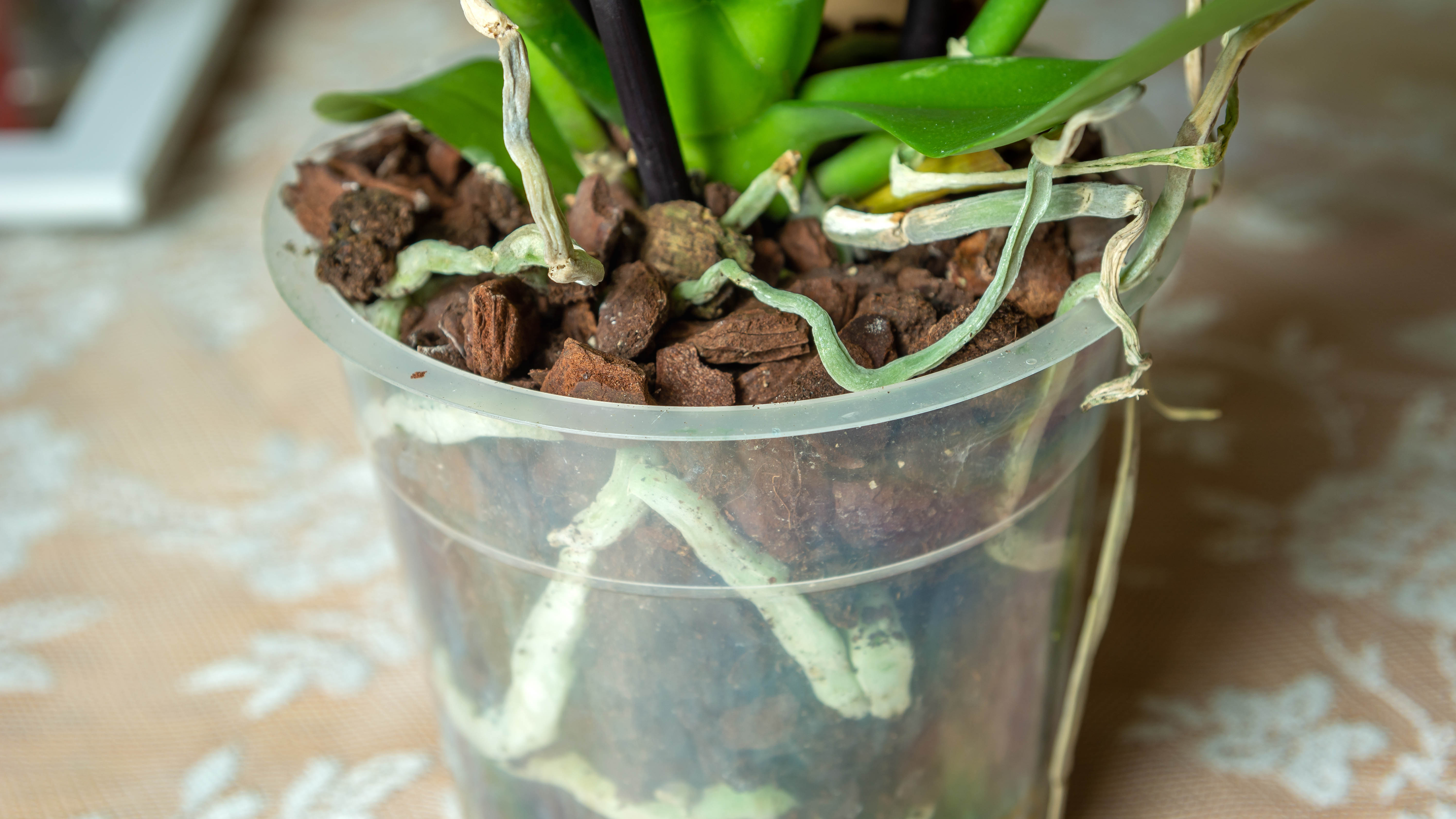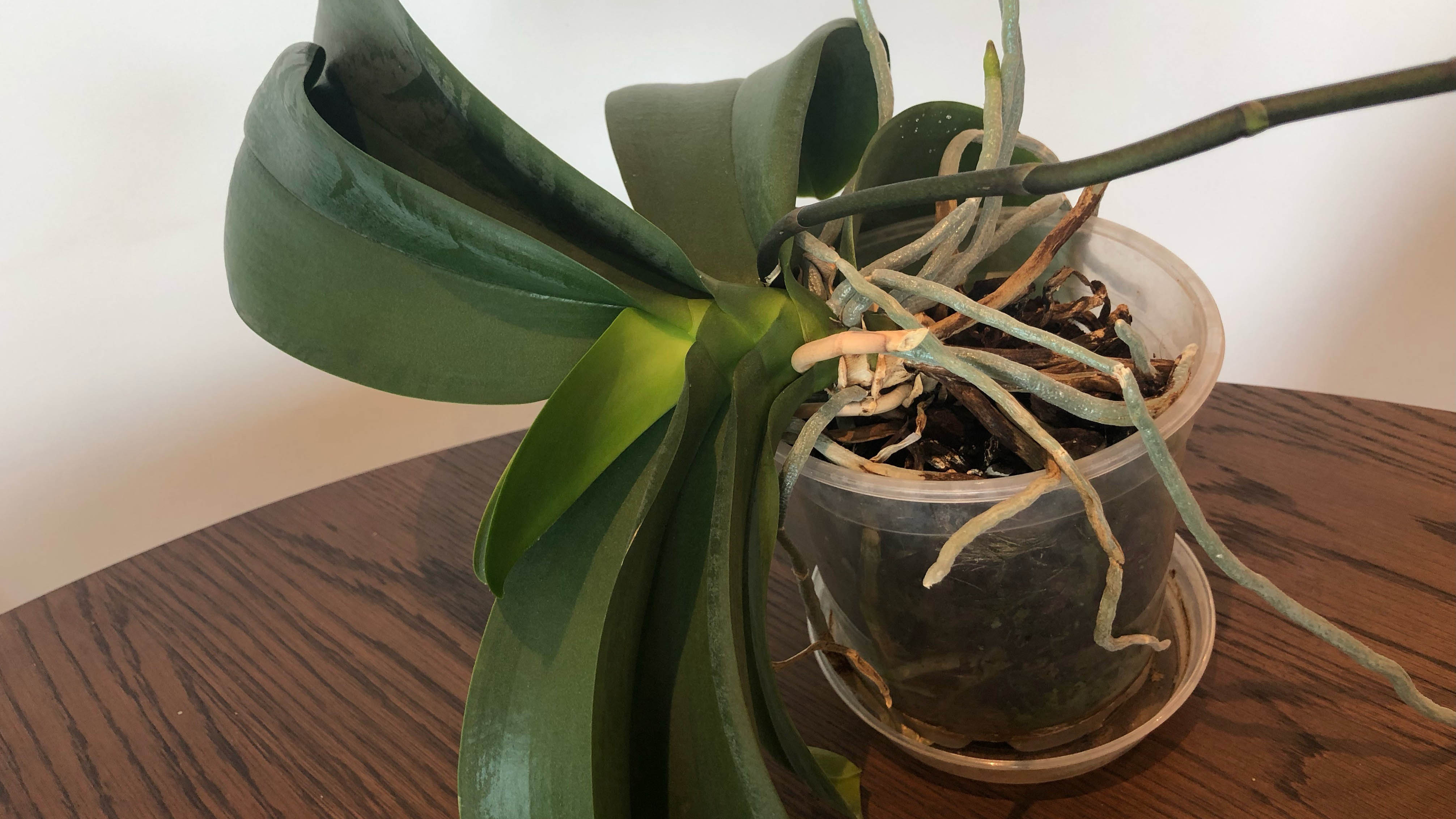7 mistakes to avoid when growing orchids
Any of these mistakes could damage your orchids

Orchids are a popular houseplant, and for good reason. They’re easy to grow and produce stunning flowers in a variety of colors — the blooms of which will last for weeks. So, it’s no shock if you spot multiple orchids filling the windowsills in some homes — I myself have three all on one bookshelf.
But, even if you’ve taken the time to learn how to care for an orchid, mistakes can still be made with this plant. Such mistakes can impact the growth and potential of your orchid, ultimately deterring its health and in extreme cases, killing it. So, if you want to get the best blooms, it’s essential that you steer clear of these errors. Want to know what habits to break? We’ve rounded up seven mistakes to avoid when growing orchids.
1. Over- or underwatering

When friends say they just can’t get an orchid to last, the mistake likely comes down to watering habits. Orchids are native to tropical regions, and don’t require a tremendous amount of water to thrive. Watering deeply and letting it drain through the container once a week is good practice.
I literally hold each of my orchids under a running faucet in the sink and rotate the container to let the water drain through. I then turn off the faucet and let it finish dripping before replacing it in the tray. It’s not good to let your orchid sit in water as it encourages root rot. Only water the potting mix directly and avoid wetting the leaves or flowers — otherwise this encourages disease.
Alternatively, you can sit your orchids in a bath of lukewarm water once a week. Fill it to reach the top of the container and add fertilizer as needed. Should small orchids float, weigh them down temporarily or trap them against a wall with another orchid. As they absorb water, your orchids will weigh themselves down. Leave these for 15 minutes, before draining the water away.
Remember, orchids should only be watered when they feel completely dry; you can always check this by feeling the top inch of the potting mix. You can usually feel the difference in weight as well. Always water in the morning and never at night because it encourages disease.
2. Insufficient light

While your orchid no-doubt adds to the décor in your bathroom, if there’s no windows in there, it’s not going to last. Orchids need bright, indirect light to thrive — six hours a day is best. So a windowsill can make for ideal placement. Be warned that direct sunlight is a big no-no for this plant though. It can actually get sunburnt, which causes the leaves to curl, yellow and eventually die.
Sign up to get the BEST of Tom's Guide direct to your inbox.
Get instant access to breaking news, the hottest reviews, great deals and helpful tips.
If you suspect your orchid needs a better source of light, try to move it gradually. A drastic change in light conditions can send it into shock. Let it sit in the new environment for a few hours a day, increasing it slowly over a few weeks. This way, the move feels less intense on the plant.
3. Inconsistent temperature

Needless to say, orchids like a warm and consistent temperature — one which reflects their natural environment. My mom attempted to move her orchids outside at one stage, but considering the chilly English climate, and the sudden drop in temperature from indoors to outside, it wasn’t a good move. These plants are best kept at around 70-80°F in the day, and then slightly cooler at night, at about 65°F or higher.
This change in temperature best matches the orchid’s home environment and it encourages fresh growth as well as new blooms. So, keep an eye on the thermostat at home and gauge how suitable the conditions actually are. You can always move your orchid to a cooler spot at night if necessary — just remember to return it to its usual position in the morning. Make sure you consider the consistency of temperature when it comes to placing your orchid too. If it's near an AC unit or a radiator, this could fluctuate conditions.
4. Inappropriate container

While orchids may be sold in decorative containers — particularly over the holidays — this isn’t the best home for it, no matter how glorious it appears at first. Orchid roots are exposed to the light in its natural environment; these plants mostly grow on trees — no soil required — so it’s no surprise that cooping up the roots in a solid container may not be for the best. As these decorative containers often lack drainage holes, they can easily encourage overwatering and root rot to boot.
Orchids are often sold in transparent containers — even if within a decorative one. While it may not look as attractive, it’s best to keep your orchid on display with this container. It helps the light reach the roots, better mimicking the natural environment. Plus, it encourages air circulation and allows for easier photosynthesis via the roots. You can also better tell how dry an orchid is via a transparent container prior to watering. These usually contain drainage holes too, so water can flow through freely.
5. Cutting back too soon or too hard

This isn't officially a mistake, but we still felt it's worth mentioning. Once your flowers are finished and you’re left with a bare stem, it’s all too tempting to grab a pair of the best pruning shears and cut it away. But, before you do, know that depending on the variety of orchid, it might not be finished.
I found this out for myself when, purely out of laziness, I didn’t get a chance to cut back a spent flower spike. When I got around to pulling out the scissors, I noticed that another spike had actually started growing out of one of the nodes. I left it to grow and now I have a secondary stem with a whole new batch of flowers on display. This is something which the Phalaenopsis, or moth orchid, is capable of. It can focus its energy on growing a secondary set of smaller flowers using the same initial spike.
To do this, simply leave the initial bare spike in place and wait to see if fresh growth occurs from one of the nodes. Of course, this look won't be to everyone’s taste — the old stem needs to remain in place. which can look spindly. Some may prefer the orchid to focus its growth elsewhere. In which case, cutting back the green spike to just above the first node will be best. It will still re-flower several months later with the right care. If the stem browns and dies after flowering, it’s finished and will need cutting down to the base regardless.
Another option for this type of orchid is to cut it down once it’s finished flowering to two nodes from the base. It could then grow fresh flowers from the same spike within a couple of months. You may have to wait a little longer in this case — but the spike would appear more tidy and of a more appropriate length. This is what I might do next time. Keep in mind such growth depends on the health and strength of your orchid though, and won’t always be successful.
6. Failing to repot

Orchids can outgrow their containers, just like any other plant. When this happens, it’s important that you take the time to repot it and give it adequate space. If an orchid is kept in cramped conditions, its growth and overall health will be suppressed. The air circulation in the container will be reduced, meaning root rot will be all the more likely. Plus, as the potting medium breaks down over time, it won’t be supplying the necessary nutrients to your orchid. You can tell your orchid has outgrown its home when its roots overflood the container and break through the drainage holes.
Don’t forget to give your orchid regular maintenance in addition to repotting. For instance, clean the leaves every so often — this makes them look more attractive and helps them better absorb air and moisture from the atmosphere. Check the leaves regularly for pests as well — particularly the underside. These will need dealing with quickly to avoid an infestation. Make sure you quarantine your orchid away from others if you suspect pests.
7. Forgetting to rotate

Finally, while your orchid may have the right light and temperature conditions, it still needs regular attention, particularly in terms of the angle it’s facing. If you leave your orchid facing the same direction as it grows, you might notice that the leaves almost seem to crawl out of the container as it reaches for the light. This can be a nuisance for a heavy-set orchid with multiple leaves, because it can tip itself over when it dries out from the sheer weight of the leaves.
To prevent this, rotate your orchid regularly as it grows, and try to keep the leaves centered. If you’re repotting an orchid, you can direct the leaves better in its new home; otherwise you need to train it to grow straight. Remember to use a stake and clips to keep any spikes straight as well. Otherwise this can contribute to the direction of the weight and can make your orchid take up more space than necessary too.
More from Tom's Guide

Katie Mortram used to be a Homes Editor for Tom's Guide, where she oversaw everything from kitchen appliances to gardening tools, as well as smart home tech. Specializing in providing expert advice for cleaning and home manintenance, she now works as Household Advice Editor for Good Housekeeping.
